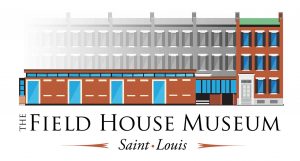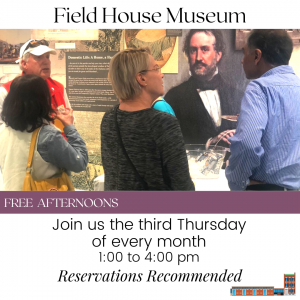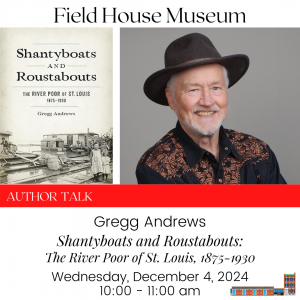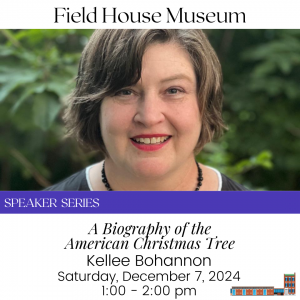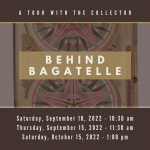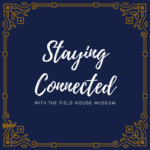Treasures from the Collection – April 2017
A Victorian Scrapbook
by Marianne Gleich
Scrapbooking as i t is known today became popular in the 19th century, albeit in a slightly different format. This pastime was viewed as a manner with which to preserve special items of personal interest, including all types of materials from poems to cartes-de-visite (calling cards) to recipes and, in Eugene Field’s case, to preserve precious newspaper clippings. Whatever the reason for compiling the memorabilia, these scrapbooks from time gone by offer us a look into the cultural events and diverse lifestyles of the period, shedding light on the private lives of the person making the scrapbook.
t is known today became popular in the 19th century, albeit in a slightly different format. This pastime was viewed as a manner with which to preserve special items of personal interest, including all types of materials from poems to cartes-de-visite (calling cards) to recipes and, in Eugene Field’s case, to preserve precious newspaper clippings. Whatever the reason for compiling the memorabilia, these scrapbooks from time gone by offer us a look into the cultural events and diverse lifestyles of the period, shedding light on the private lives of the person making the scrapbook.
The history of the scrapbook includes some well-known names, in addition to Eugene Field. Collections show that our third President, Thomas Jefferson, was one of the first notable Americans to gather items for a personal album. With an idea of preserving information from his presidency as well as passing the books on to his heirs, Jefferson complied a series of albums and filled them with poems, newspaper clippings and other items of interest. The term “scrapbook” was not used in this time, coming into existence around 1825 near the end of President Jefferson’s life.
Mark Twain was another early American who cherished scrapbooks. Ever the showman, Twain invented scrapbooking supplies which showcased his, and others’, collections by using pre-pasted pages for which he received a patent in 1872. This invention allowed him to easily travel with scrapbooks during his numerous voyages and to share his personal albums with others. It is believed that this pre-pasted page invention brought a handy profit to Twain, as well as making it one of his most popular “books”. According to an article in The St. Louis Post-Dispatch in 1885, Mark Twain earned $50,000 with his idea for self-pasting strips of glue. By 1901, Twain had patented 57 different types of scrapbooks.
The Field House Museum is fortunate to have in its collection Eugene Field’s personal scrap album which is currently on display in the new museum library. Recently donated to the museum, the album cover is made of beautifully tooled leather in a rich, deep red burgundy accented with navy blue, which was a popular type of album cover during the mid-1800s. Eugene’s “Scrap Album”, which is the title on the cover and not the word “scrapbook”, contains 95 articles which he clipped from newspapers published far and wide, all of which pertain to his charming book Love Songs of Childhood. Beside each meticulously placed article is an annotation in Eugene’s microscopic hand indicating information he deemed important, especially the date of the article. These articles appeared in print late in Eugene’s career, the last dated just a few months prior to his untimely death in 1895. It is interesting that he chose articles pertaining solely to Love Songs of Childhood and that he realized and appreciated the popularity of this particular book, as well as his soaring personal popularity.
A visit to the new Field House Museum library will allow you to view this treasure in person along with myriad items pertinent to Eugene Field, his father Roswell and Dred Scott. The library is open to visitors during regular museum hours.





